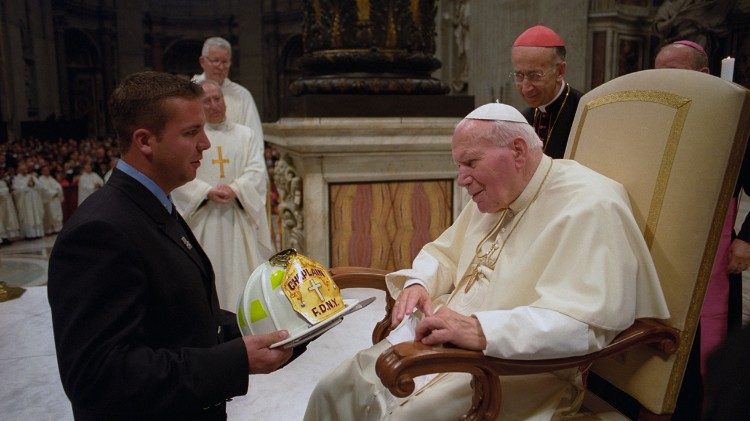Remembering 9/11 with the 杏MAP导航s
By Devin Watkins
On the 17th anniversary of the September 11, 2001 attack on the World Trade Center in New York, we step back in time to remember the words and actions of three 杏MAP导航s when faced with the horrors of 9/11.
杏MAP导航 St. John Paul II: 2001
It was a Tuesday. 杏MAP导航 John Paul II watched events unfold live on television. His press secretary later recounted how JPII sought to get in contact with US President George W. Bush by telephone to express his closeness to the American people. But the president was unreachable and in a secure location for security reasons. The 杏MAP导航 sent a telegram instead, decrying the “inhumane attacks” and assuring his prayers in those trying times.
The next day was a Wednesday, and 杏MAP导航 John Paul II held the weekly General Audience under the strain of interior suffering. 9/11, he said, “was a dark day in human history, a terrible attack on human dignity.” He added: “The heart of man is an abyss whence, at times, emerge acts of unspeakable ferocity.”
杏MAP导航 emeritus Benedict XVI: 2008
On April 20, 2008, 杏MAP导航 Benedict XVI made the first papal visit to Ground Zero in New York. To honor the victims, the 杏MAP导航 chose not to give a speech. He said a prayer instead.
Under a gray sky, an oboe played a mournful tune as he descended into the unfinished monument to gaze into its temporary reflecting pool. “God of understanding,” he prayed, “overwhelmed by the magnitude of this tragedy, we seek your light and guidance as we confront such terrible events.”
杏MAP导航 Benedict then lit a candle to remember the victims who died in New York, Washington D.C., and aboard the United 93 flight that crashed in Pennsylvania.
杏MAP导航 Francis: 2015
Seven years later, 杏MAP导航 Francis followed in his predecessor’s footsteps, visiting the completed Ground Zero monument on September 25, 2015. Only the sound of flowing water could be heard as the Holy Father laid a white rose on the edge of the reflecting pool.
At this symbolic location, 杏MAP导航 Francis held an interreligious meeting, and appealed for all religions to promote peace together.
“This place of death became a place of life too,” he said. It is “a hymn to the triumph of life over the prophets of destruction and death, to goodness over evil, to reconciliation and unity over hatred and division.”
Thank you for reading our article. You can keep up-to-date by subscribing to our daily newsletter. Just click here







